5 Best Star Trek: The Next Generation Two-Part Episodes
Here are the five best two-part episodes of Star Trek: The Next Generation.
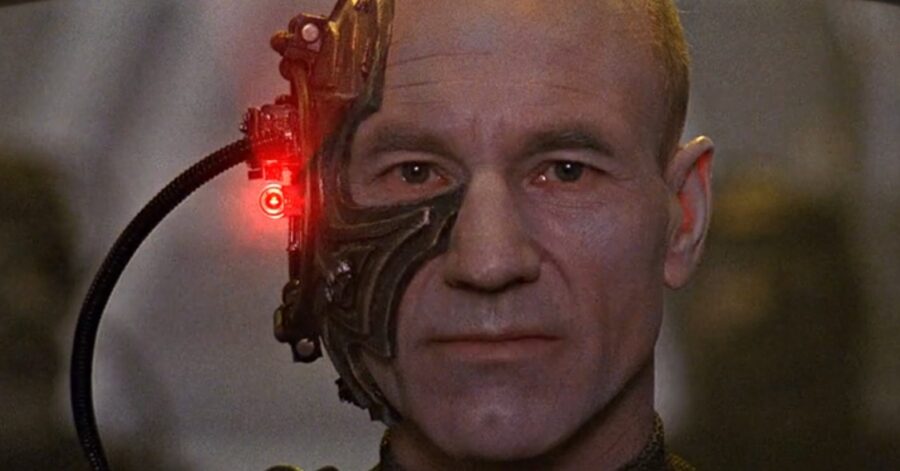
With the recent conclusion of Star Trek: Picard bringing an end to the onscreen adventures of the cast of Star Trek: The Next Generation, it’s a good time to look back on the series that brought Star Trek roaring back to life. It was also the series that solidified two-part episodes as a regular occurrence in the franchise, breaking a long-standing rule that the Original Series only violated once. These episodes gave us some of TNG’s most memorable stories and most important pieces of character development.
Here’s our list of the top 5 two-part episodes from Star Trek: The Next Generation.
5. “Encounter at Farpoint”
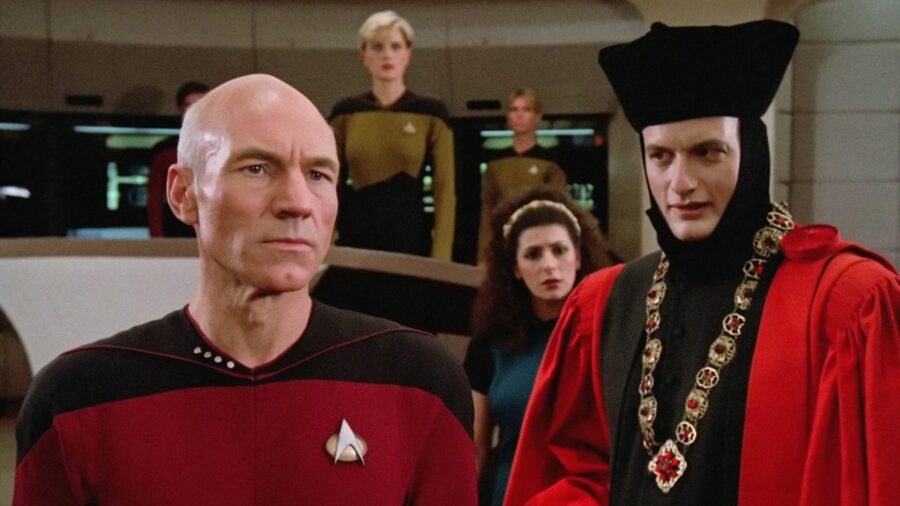
In the series premiere, Captain Jean-Luc Picard takes command of the latest USS Enterprise and meets his crew, including his first officer, Commander William Riker, for the first time. The crew also meets the godlike being Q, who insists upon putting humanity on trial as the Enterprise embarks on a quest to unravel the mysteries surrounding Farpoint Station.
There is a lot that hasn’t been figured out at this stage of the series, resulting in some clunky dialogue, overzealous performances, and uneven moments, but there’s a charm to this early effort that can’t be denied. It also gives us important elements in the introductions of Data, the holodeck, Will and Deanna’s relationship, and Picard’s initial curmudgeonly demeanor that would echo throughout the series. Some elements were even called back to as recently as Season 3 of Star Trek: Picard.
Love or hate its campiness and fumbling with how things work in this new era, you can’t beat John de Lancie’s introduction as Q or the way this episode captured 1987 audiences’ imaginations. For better or worse, it touched off a wildly successful series that we have to thank for every new Star Trek venture since.
4. “Chain of Command”
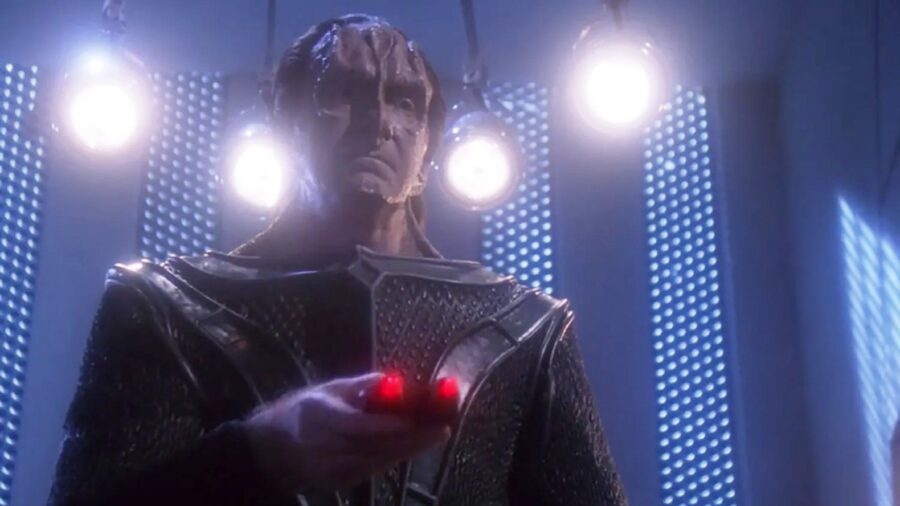
As Dr. Crusher, Worf, and Capt. Picard are sent off on a top secret Starfleet mission, the Enterprise is put under the command of Captain Edward Jellico, whose leadership style causes tremendous friction with the crew. Meanwhile, Picard is captured by the Cardassians and brutally tortured in some of the darkest, most emotionally wrenching scenes in the series.
It’s somewhat odd that this series has been the source of so many memes and jokes, from the Star Trek: Jellico comic strip memes on the Captain Edward Jellico Twitter account to the endless lighthearted references to Picard’s line, “There are four lights!” The original episode is actually uncomfortable to watch as the crew is constantly set on edge by Jellico’s unceremonious pushing aside of pretty much everything that defined Picard’s style (even his fishbowl). It’s also gut-twisting to see Picard subjected to such intense physical and psychological torment, making his “four lights” declaration an incredibly powerful climax to one of Patrick Stewart’s most complex and heart-rending performances.
The episode was produced in cooperation with Amnesty International to draw attention to the cruelty of torture and to the fact that, as Picard says in the episode, “Torture has never been a reliable means of extracting information; it is ultimately self-defeating as a means of gaining control. One wonders why it is still practiced.”
3. “Unification”
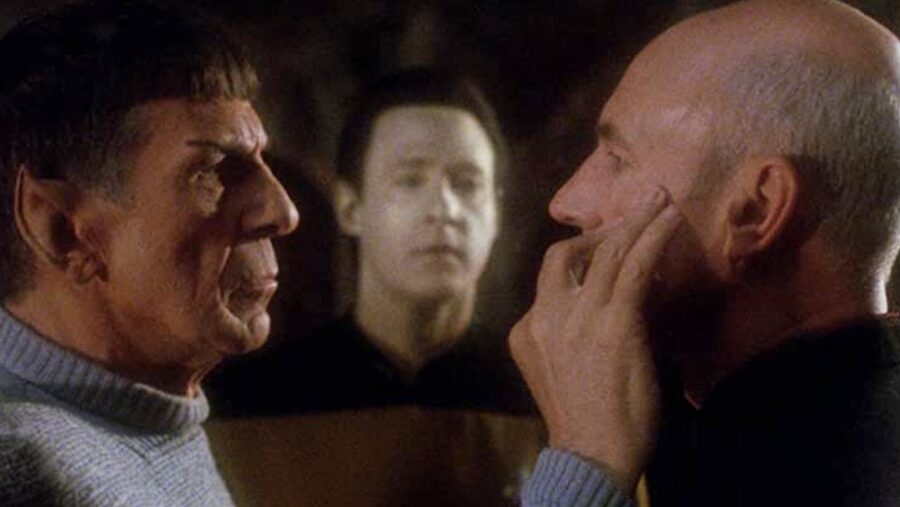
Picard and Data go undercover on Romulus to determine whether Ambassador Spock has defected from Starfleet, leading to not only meeting Spock but working with him to thwart a Romulan plot to invade the Federation. Spock’s appearance at the end of the first episode is one of the series’ greatest surprises and the third of three appearances by members of the original Enterprise crew in TNG. It also saw the return of Denise Crosby (who portrayed Lt. Tasha Yar in the first season) as Sela, whose mother was an alternate timeline version of Yar.
There is a lot to love in this episode, including seeing Crosby getting to play an entirely different sort of character, but the obvious standout is Leonard Nimoy’s return as Spock. The episodes aired about a month before what was intended to be his final screen appearance as Spock in Star Trek VI: The Undiscovered Country and represents a part of that film’s intended legacy of handing off the franchise to the TNG cast in the year of its 25th anniversary.
The two-parter even got a sequel in Star Trek: Discovery’s “Unification III.”
2. “The Best Of Both Worlds”
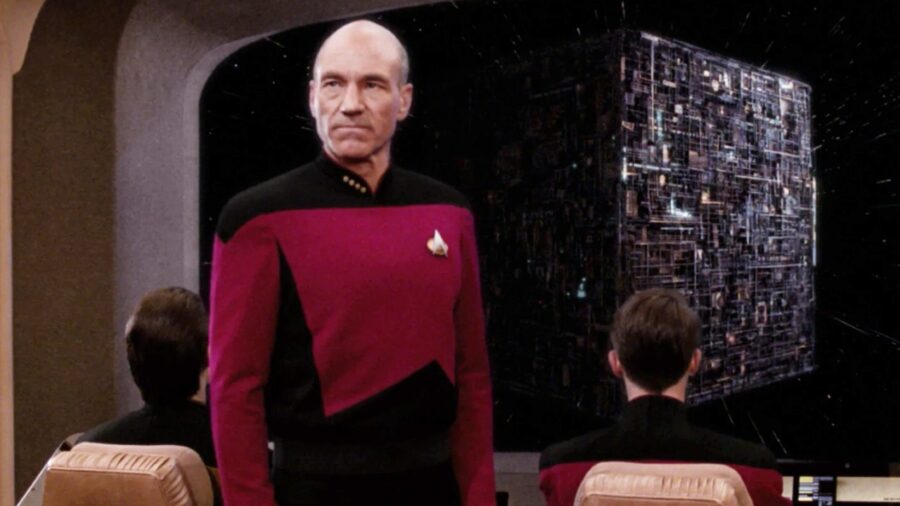
If the goal of a two-part episode is to leave an audience hanging week-to-week, this episode should top the list. As the Enterprise crew investigates Borg incursions into Federation space, Captain Picard is kidnapped by the biological/synthetic hybrid race and assimilated into their collective as Locutus of Borg. The climax of the first episode, in which Acting Captain Riker is forced to fire on the Borg cube and possibly kill Picard lives as one of the most nail-biting moments in franchise history.
But this episode is so much more than its legendary climax. It brought a new dimension to the Borg, introducing the now-essential concept of assimilation to the threat they pose. It also gave Picard his deepest psychological scar—one that has followed him through movies and episodes and even Star Trek: Picard.
Beginning with the excellent follow-up episode “Family,” this story arc has represented Star Trek’s most enduring admission of the resonant effects of trauma, even in its idealized future. It has also provided richness and depth for Picard’s character that changed the course of his development forever and solidified the Borg as Trek’s most formidable threat.
1. “All Good Things…”
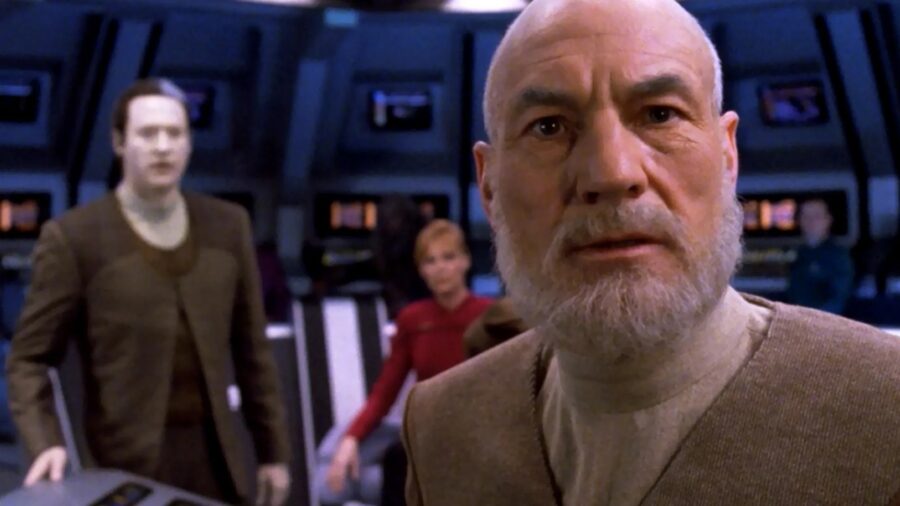
In the superb series finale, Picard is sent flashing backward and forward in time, from his crew’s first mission to Farpoint Station to 25 years into his future. Of course, Q is mixed up in all of this and informs Picard that he is responsible for the destruction of humanity, a calamity the captain must avert by solving the mystery of how he did it and how his time-shifting might provide the answer. This two-parter stands as one of the greatest endings to any television series, providing closure to seven years of adventures, while opening the door to new ones.
Written by Ron Moore and Brannon Braga, “All Good Things…” gave fans a glimpse of a possible future for the Enterprise crew as well as a return to the premiere episode, which was re-created in loving detail and sent wildly off-course. The episode is a testament to the connections developed between the characters during the series and a hint at what could lie ahead as their connections might deepen, become strained, and even be severed over time. The brilliantly twisty story keeps fans guessing right along with Jean-Luc and the crew and introduces his Irumodic Syndrome, a neurological disorder that would become important in the character’s later development.
In its closing scene, it also focuses on the found family of the crew, which is what they had become to each other and to the audience over the course of the series and beyond.












